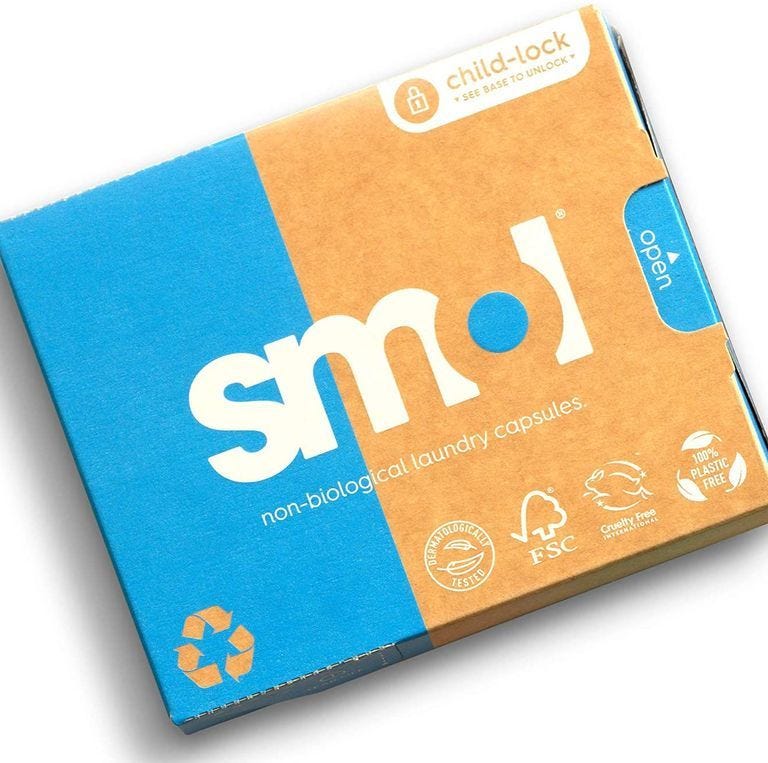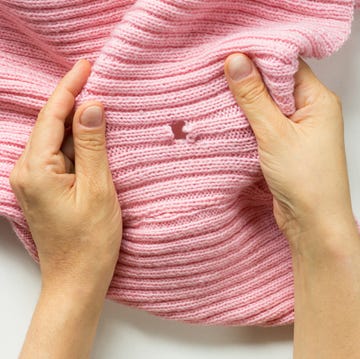The best washing machines will leave clothes clean and crease-free. But, no wash cycle is safe when it comes to fluff.
Fluff is a common problem we all face at one time or another. When you expect freshly washed laundry, you get a furry residual coating on your favourite blouse or trousers, which is as unsightly as it is difficult to remove. So what can you do when fluff becomes an annoyance? We’ve got the answer – in fact, we’ve found eight ways to keep fluff at bay.
3 things I've learned from testing washing machines
HERE'S HOW YOU CAN MAKE YOUR WASHING MACHINE LAST LONGER
THIS IS WHY YOU SHOULDN'T JUST USE THE QUICK WASH SETTING
HERE'S WHAT YOU SHOULDN'T PUT IN THE WASHING MACHINE
What is fluff?
Fluff or lint predominantly comes from our clothes as they’re washed and dried. One item can release lots of fibres in a single cycle which is then transferred to other items in the water, or in the air current combined with the tumbling motion. It then clings and tangles onto the surface of neighbouring clothes, making it tricky to remove unless directly plucked away.
The result is freshly-washed items peppered in a furry residue – not ideal! Thankfully there are ways to deal with this wash day woe.
1. Clean your washing machine
The first step is to remove any existing fluff from your washing machine. That way, residual lint from previous cycles won’t be leaving a mark in future washes.
Remove and clean the detergent drawer; warm soapy water should do the trick. Following this, empty and clean the drain filter; this will remove any fluff which has become caught in the base of your washing machine. Use the drain hose if you have one, if not, unscrew the cap gradually with a shallow tray beneath to catch the water. Remove the filter entirely and scrub with warm water.
Then moving onto the drum of the machine, use a damp kitchen towel to wipe around the door’s seal, being sure to reach in where it overlaps. You do not want to use a microfibre cloth because you will just transfer the fluff to this surface instead, which will be frustrating to remove.
Once your seal is fluff-free, run a service wash, or if your machine doesn’t have one, run an empty cycle at 60 degrees of higher. This will flush it through. You can always use a washing machine cleaner to give it the full treatment, such as Dr. Beckmann Service It Deep Clean Washing Machine Cleaner.
2. Clean your tumble dryer
If you use a tumble dryer regularly, fluff could be coming from here as well. Cleaning this appliance is simple. Start by removing and emptying the lint trap between uses. This will quickly fill up with fluff during the cycle and so needs regular maintenance. It can usually be found just inside the door, towards the base of the machine. Open it up like a book and remove any visible fluff before replacing. If you see any fluff sitting in the filter housing, you could also use the crevice tool on your vacuum with a low setting to remove it.
Do not leave the lint trap to overfill. In this state, air won’t be able to circulate air as easily inside the dryer, which means it will take longer and so use more energy to dry. Fluff will also struggle to collect in the filter as effectively in such a state, meaning it’s much more likely to be redistributed around the load. On top of this, an overloaded lint trap is a fire hazard, so you must keep on top of this.
Don’t forget to keep the vent free of fluff as well if you’re using a vented tumble dryer. If you’ve got a condenser model, you must fully empty the tank between uses to keep it functioning too.
3. Spot the problem items
Now that your machines are free of fluff, you can focus on the items causing the problems in the first place. This can go one of two ways; either you know the item that’s expelling fluff onto other items in the wash, or you’ve got a particularly vulnerable item that’s attracting more fluff than other garments. Either way, separate those items from the others in the future, and wash by hand instead. In doing this, they will remain fluff-free or not have the chance to transfer onto other items.
Make sure these items steer clear of the dryer too as they will be particularly susceptible/prone to release fluff in here. Line dry instead.
4. Remove excess fluff
If you need to remove fluff from items already covered, there are a couple of ways you can go. First, you can use a lint roller such as Korbond Lint Roller. There’s also the option of using a fabric shaver for fluff that starting to pile, or you could opt for a combination of the two with Gleener’s Fabric Shaver. Failing that, good old masking tape can get the job done too. Simply hold both ends with your fingers and press repeatedly, swapping for a new strip once it loses its stick. Be sure to remove all traces of fluff before washing the item.
5. Wash items inside out
It’s not a solution per say, but washing and tumble-drying items inside out can keep the exterior from being coated with fluff. Ideal if you’ve got one item that always comes out covered whatever you do.
6. Reduce spin speed
The more aggressive the cycle, the more fluff is released from items. So it stands to reason that by reducing the spin speed and the abrasiveness of the wash, there’s going to be less fluff to deal with. It’s a simple solution, but can make a difference. It’s true that items won’t be as dry as they could be, but it potentially saves you from plucking off excess fluff by hand, which is a good trade-off.
Try to keep heavy-set items which are more abrasive, such as denim, out of the cycle if you’re dealing with items prone to release fluff as well. If you must wash them, make sure zippers and buttons are done up. You want as little friction in the drum as possible.
7. Shake out items
It only takes a moment, but shaking out garments when they’re ready to dry, and once they’ve fully dried, can release any final fluffy residues which are hanging on. Shaking out your damp items is also a good way to deter wrinkles as it helps loosen up the fibres. It reduces static too for freshly tumble-dried items.
8. Use fabric softener
Finally, fabric softener is handy for keeping fluff at bay too. It applies positively charged chemical compounds onto the surface of fabrics which already contain negatively charged compounds, and by cancelling out this charge it reduces static. And less static means items are less likely to attract fluff during the cycle and thereafter.




















